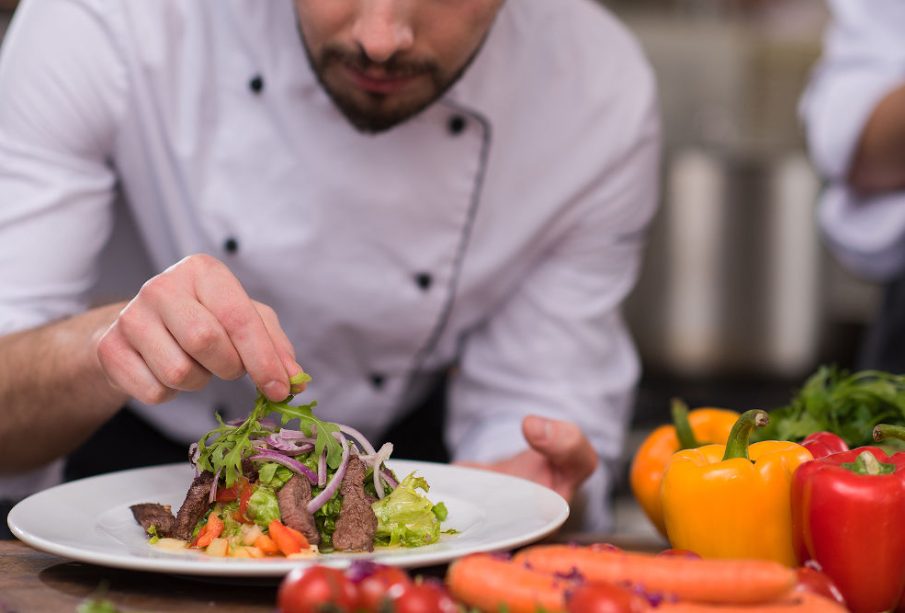The Sparkling World of Edible Glitter in Culinary Creations

The culinary industry has always embraced creativity, and in recent years, visual appeal has become just as important as taste. One of the most exciting ways chefs, bakers, and home cooks elevate their creations is by using edible glitter. This sparkling addition not only enhances the look of food and beverages but also adds a sense of fun, celebration, and artistry. As consumers become more engaged with food presentation, especially through social media, the popularity of edible glitter continues to grow across kitchens, bakeries, and restaurants worldwide.
What Makes Edible Glitter Different from Regular Glitter
The first thing to understand about edible glitter is that it is entirely safe for consumption. Unlike craft glitter used in art projects, edible glitter is made from food-grade ingredients designed to meet health and safety standards. Depending on the manufacturer, it may be created from sugar, starch, or other natural components that dissolve easily in the mouth. Some varieties are labeled as “food safe” but not fully digestible, while true edible glitter is crafted to be both beautiful and completely consumable.
This distinction is important for bakers and chefs who want to guarantee both safety and quality in their creations. The composition of edible glitter ensures that it can be applied directly to cakes, cookies, cupcakes, and drinks without concern for harmful effects. In fact, many products are made from natural colorings derived from fruits and vegetables, offering both vibrant colors and peace of mind for those conscious about additives.
The difference is not only in safety but also in performance. Edible glitter is formulated to hold its sparkle in moist or dry conditions, meaning it will not easily dissolve or lose its luster on desserts or beverages. This durability makes it a versatile decorative option, whether it is sprinkled on whipped cream, blended into frosting, or stirred into cocktails.
Creative Uses of Edible Glitter in Food and Drinks
The rise of edible glitter has unlocked countless creative possibilities for those looking to add flair to their culinary creations. In the world of baking, cakes adorned with shimmering layers of glitter can transform an ordinary dessert into a show-stopping centerpiece. Cupcakes topped with sparkling swirls of frosting are popular at weddings, birthdays, and holiday celebrations, where the glitter serves as both decoration and an expression of joy. Cookies and pastries dusted with a subtle shimmer also attract attention, making them perfect for festive occasions.
Beyond baked goods, edible glitter has found a place in the beverage industry. Bartenders and mixologists use glitter to create cocktails and mocktails that shimmer under the light, captivating guests with every sip. Sparkling coffee drinks, lattes, and even hot chocolate are often enhanced with glitter for an extra touch of magic, especially during seasonal events. In fine dining, chefs sometimes incorporate glitter into sauces, desserts, or plated designs to add an unexpected element of surprise.
The appeal of edible glitter extends beyond formal occasions. Parents often use it to make children’s treats more fun, adding sparkle to school snacks or homemade desserts. Social media has amplified these uses, with food influencers showcasing recipes that feature glitter-covered doughnuts, shimmering candy, and glitter-filled ice cubes that add sparkle to any drink.
The Market and Trends Surrounding Edible Glitter
The popularity of edible glitter has fueled a rapidly expanding market that caters to both professionals and hobbyists. Specialty baking shops, craft stores, and online retailers now carry a wide variety of glitter options in different colors, textures, and finishes. Some are fine and powdery, while others come in larger flakes or crystal-like shapes for bold decoration. Gold and silver remain timeless favorites, but there is a growing demand for pastel shades, holographic tones, and even glitter infused with natural extracts.
Health-conscious consumers are also influencing trends in edible glitter production. Many manufacturers now prioritize gluten-free, vegan, and allergen-friendly formulations to ensure accessibility for a wider audience. Plant-based dyes are becoming more popular, aligning with the shift toward natural and organic food products. These options appeal to consumers who want to balance indulgence with mindful eating habits.
The demand for sustainable products has also entered the edible glitter industry. Brands are working to create eco-friendly packaging and responsibly sourced ingredients, reflecting the broader values of today’s consumers. These efforts not only improve brand reputation but also resonate with environmentally conscious buyers.
Choosing the Right Edible Glitter for Your Needs
When selecting edible glitter, it is essential to consider the type of product and its intended use. For bakers, fine glitter that adheres easily to frosting may be the best choice, while mixologists might prefer a dust that blends smoothly into liquids without clumping. Reading labels is important to ensure that the glitter is truly edible rather than just labeled as non-toxic. True edible glitter will specify that it is made from food-grade ingredients and safe for consumption in any quantity typically used for decoration.
Storage and handling also play a role in maintaining the quality of edible glitter. Keeping it in a cool, dry place ensures that it retains its sparkle and does not clump together. Applying it just before serving often yields the most dramatic visual effect, as the shimmer remains vibrant and eye-catching. For businesses, sourcing from reputable suppliers helps ensure consistency in color, shine, and safety.
As edible glitter becomes more common in kitchens and cafes, its role continues to evolve. What started as a novelty has transformed into a staple in modern food design. It bridges the gap between culinary artistry and entertainment, offering professionals and home cooks alike the ability to elevate even the simplest dish into something extraordinary.











